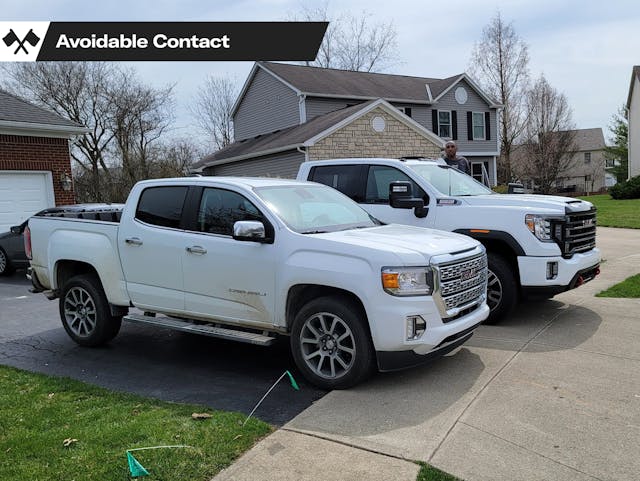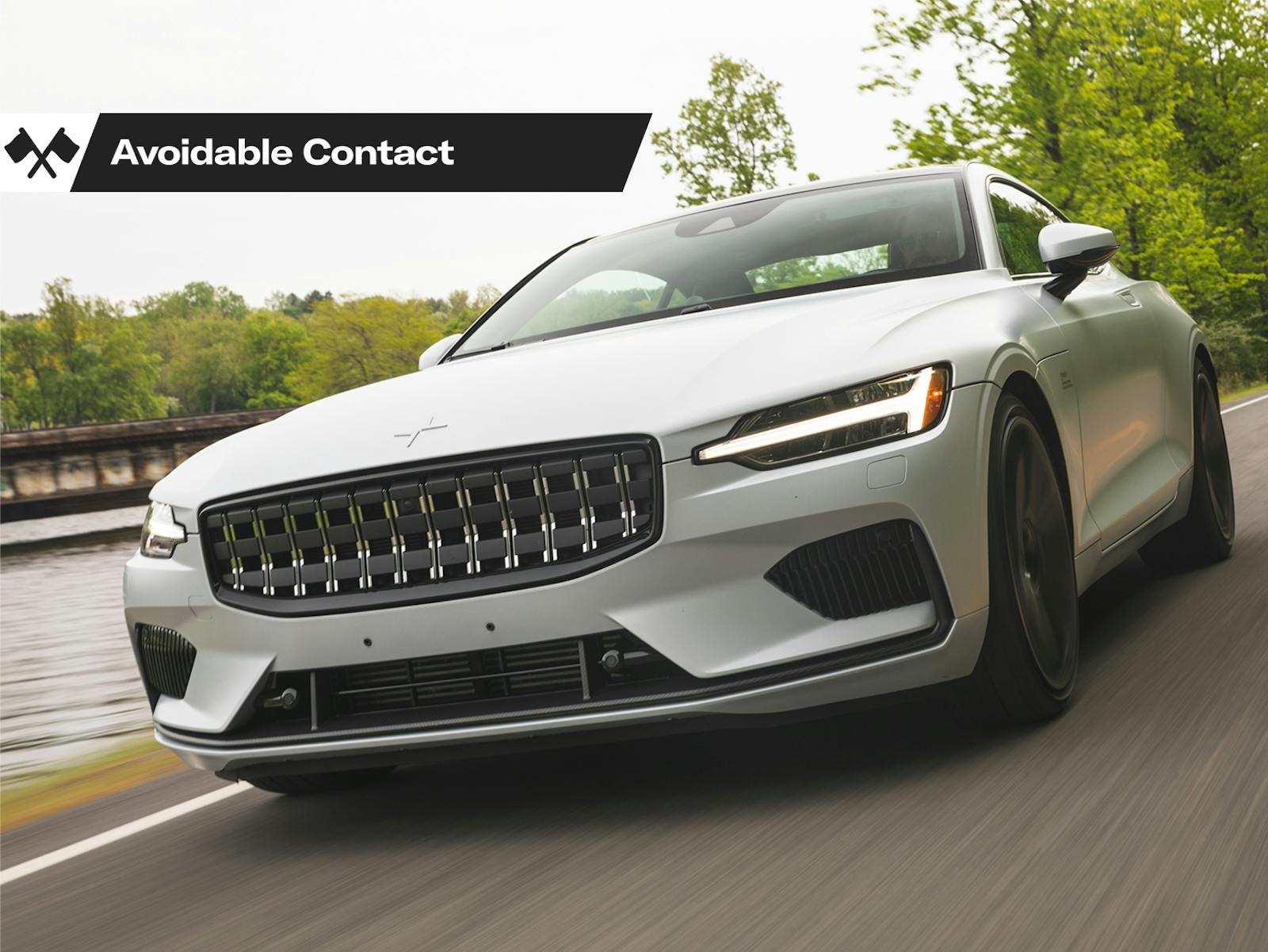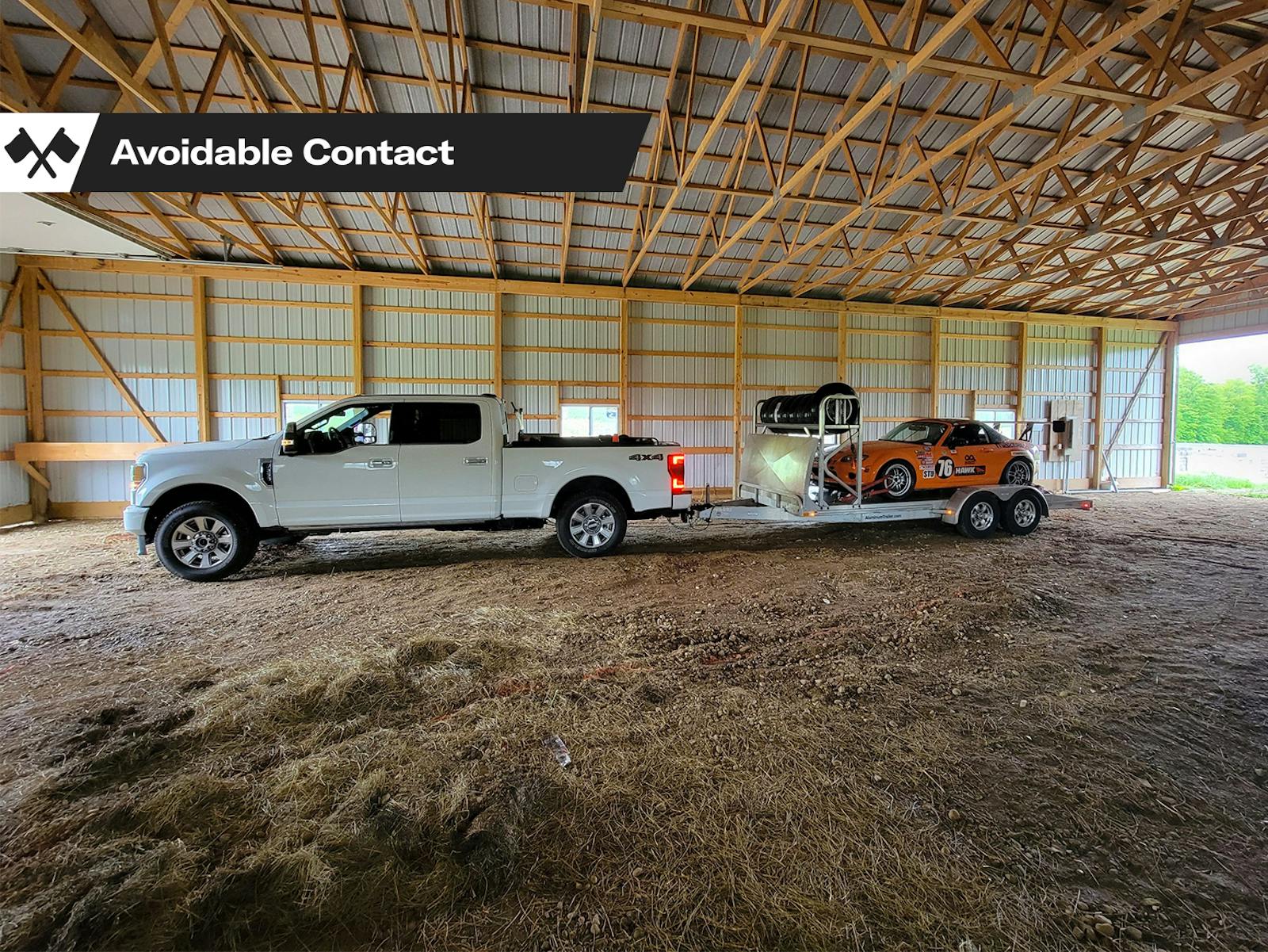Avoidable Contact #143: All beds bright and beautiful, all pickups great and small

Now, as they used to say on TV, the story can be told: In December I ordered myself a frisky new F-250 Platinum Crew Cab with the 7.3-liter “Godzilla” pushrod V-8 and the oh-so-hip “Dark Marsala” eggplant-colored leather interior. This morning, April 4th, it showed up at my favorite little rural dealership. My wife has a habit of naming our trucks, so I’m going to suggest “Commodus” for this one. Those of you who saw Ridley Scott’s fine Gladiator will remember the scene where young Commodus shows up at the scene of a big throwdown between the Romans and a Germanic tribe. He runs to the Emperor, Marcus Aurelius:
“Father, have I missed the battle?”
“My son,” Aurelius replies, “you have missed the war!” Similarly, my F-250 has missed the war that began when I sold my house with a drop-dead move-out date of March 31st. This move, my first in 21 years, was a massive effort that ended up involving four dumpsters and seven storage units ranging in size from 10×20 to 15×45. This was a job for a truck. A real truck, not the sensibly-sized and tidily-proportioned Canyon Denali that joined the herd a month ago.
Our new Road Test Editor, the inimitable Alejandro Della Torre, managed to secure me a week’s use of a real pickup, which just so happened to be the same color, and from the same manufacturer, as my new mini-truck: a $79,000 GMC Sierra HD 2500 Duramax AT4. Beyond that, there are very few similarities. I thought it might be fun to take these two quite different vehicles through essentially the same tasks and see how they did. Is a bigger truck always better? Alternately, are today’s so-called “midsized” pickups better-suited for real life outside that familiar Bob-Seger-soundtrack, bed-shaking-hopper-drop, toxic-body-on-frame-masculinity fantasy? Without further ado, here’s what I learned, boiled down to a few digestible conclusions:

Both of these trucks, like the rent in New York City, are just too dammed high. I have little patience for the deranged victim-as-fetish-pornography put out by various opponents of the American pickup in outlets as diverse as the Atlantic and Jalopnik, but I do find common ground with them on the matter of overall height. The higher your truck is, the harder it is to put it to work. That’s why my old Silverado wasn’t a Z71 and my new F-250 isn’t an FX4, even though these option packages are almost free and they increase resale by a nontrivial amount. The top of the Sierra’s bed is at chin level for me, and I’m 6-foot-2. Loading it with small-but-heavy items, like boxes of magazines or Apple //e computers with a lead base, was a real hassle. Getting the stuff back out was even worse and in most cases required getting into the bed itself to shove the items towards the tailgate. The “amen corners” of the box where it meets the cab are basically unreachable by normal human beings, and the center of the bed at the cabin end is even worse.
The Canyon Denali is better in this regard, but it’s still not great, placing the top of the bed at about armpit height for me. My 12-year-old son is 5-3, basically the average height for an American adult woman, and he had the same problems with the Canyon that I had with the Sierra. I found myself wistfully recalling my 2001 Nissan Frontier 4×2 that could be loaded with about the same effort required for a grocery-store shopping cart. There’s a reason we didn’t have all the fancy “man steps” and multi-level tailgates back then: they weren’t needed. Let’s get back to lower trucks. The new Maverick is an outstanding example of how it should be done.

Think carefully about buying a modern diesel. I was a Ford salesman when the original Navistar PowerStroke 7.3 turbodiesel came out. It was a brilliant and everlasting piece of equipment, and my race team still uses a 1996 F-350 with that engine. The only serious drawback was the purchase price, which was more than accounted for in resale improvement. Today’s General Motors Duramax is much more than twice as powerful as the 1995 PowerStroke, and it starts at the push of a button in almost any weather, but it is a fiendishly complicated device that costs a lot of money to purchase and run. Twice during my thousand-mile press loan it decided that it needed to go to a dealership RIGHT NOW, with dire warnings of speed limitation if I failed to do so, only to have it change its mind the next time it was started up.
The returned mileage was impressive—20.3 mpg without a trailer, 15.9 pulling my wife’s Roxor on an ATC aluminum hauler—but diesel fuel is no longer the cheap alternative it was 30 years ago. And today’s 3/4-ton gas engines are serious business, whether you’re talking the 6.4 HEMI, the 6.6 GM iron V-8, or the Godzilla. They don’t need DEF and they don’t have service procedures that start with “Step 1: Remove cab from body.” If you think I’m kidding about that, ask a current-day pickup mechanic.
Not that the Duramax wasn’t thrilling. Ask the Scat Pack Charger that got smoked in a 200-foot dash to a lane merge last Thursday. It’s just, as the kids say, a lot. In every sense.
Luxury in a truck is nice. Complication is not. The Sierra was equipped with GM’s MultiPro tailgate. When it works, it’s fascinating and useful. But in our test vehicle, it didn’t work all the time. Especially when the temperature dropped below freezing. Your humble author loaded approximately 1500 magazines and press kits into the bed of the Sierra, drove to a storage unit, and was greeted with an “upper tailgate failure” message. There was nothing to do but do climb into the bed, put a few storage boxes on the corners of the bed, then get back out of the bed and carry them away. Rinse and repeat eight times. Then go ahead and cancel your CrossFit for the day, because you just did it. A search of the Internet shows that I wasn’t exactly breaking new ground in having this problem. Why have an electric tailgate of any kind on a truck? It’s stupid.
I have a similar contempt for the seat-thumping lane-departure warning, the auto headlights that blind motorcyclists, the overhead-view camera, and any number of other “advanced” features found in the Sierra. The Canyon Denali is much simpler, and all the better for it. I particularly like the manual tailgate release, a feature I will never again take for granted.

You know what’s great in a truck? Width. Pontiac was right. Wider is better. The Sierra HD is seven inches wider than the Canyon. That’s the difference between a relatively intimate cockpit and a stretch-out paradise that shortens even the longest highway slog. To put it in terms that our affluent reader base understands: A Canyon is like Delta Comfort Plus, while the Sierra is domestic First Class. (If you want Delta One, you’ll need an Airstream Interstate.) There were no circumstances in which I didn’t prefer the Sierra’s spaciousness. For the rear seat passengers, this goes double.
The Canyon, like 1978’s General Motors A-bodies, are good examples of the bare minimum in space for a body-on-frame vehicle. No surprise that a Canyon has a cabin almost exactly the same size as that of a 1978 Malibu. But you really want a Caprice, right? Of course you do. That’s why the midsizers don’t sell very well; they’re not much cheaper but there’s a big difference in space and comfort.
You make a lot of sacrifices going to a 3/4-ton truck, and not all of them are obvious. My spouse, Danger Girl, she of 1:16-around-Nelson-Ledges-in-a-Miata fame, drives the Canyon like a taller version of her NC Cup car. When the live axle kicks out over a bump, she briefly countersteers but does not come off the throttle. In a light half-ton on passenger-car all-season tires, that’s no problem. In a 3/4-ton Sierra on 70-psi load-rated long-life rubber, it’s terrifying. There have been stupendous improvements over the past 30 years in ride, handling, and tire grip—but to drive a Sierra AT4 is to miss all of them. This massive vehicle on slippery truck tires doesn’t turn or stop like a passenger car, or even like a Canyon. Remember that the next time you see one in your rearview mirror. What makes it worse, of course, is the fact that it accelerates like a C5 Corvette; the Duramax can write a hundred checks that the chassis and rubber cannot cash.
But wait, there’s more. Even with a thousand pounds’ worth of junk in the bed, the Sierra 2500 will hit a small bump in the road and launch everything on the rear seat into low earth orbit. There’s nothing quite like seeing an irreplaceable new-in-box beige-case Texas Instruments TI 99-4/A appear in your rearview mirror during such an excursion, knowing that the computer was originally on the floor. Ride-and-handling engineers have a phrase they use for the dramatic rocking motions demonstrated by live-axle vehicles over uneven terrain: head toss. A modern luxury sedan has no head toss at all. An independently-suspended SUV has very little. A Sierra 2500 AT4 has more head toss than an Iron Maiden gig, despite having independent front control arms. Don’t buy one for daily use unless you really know what you’re getting into.

If only there was a pickup that sat halfway between the Canyon, which is too small for serious hauling/towing, and the Sierra HD, which is too ungainly to park most places and too tall to load. Turns out … there is! It’s the standard half-ton GMC, which has the width and hauling capacity of a 3/4 ton but the ride and usability of a midsizer. That’s the truck most people need. Surprise! It’s the one most of them buy. It’s very popular in the automotive press to think of the average buyer as a brain-dead moron, but I’ve found that you do so at your own peril. The half-ton pickup just plain works for most people, and while the short-bed/four-door combination is a bit ridiculous-looking, it’s very usable for what most people need. If you can only have one truck—heck, if you can only have one vehicle—a half-ton is a pretty good choice for everything but trackdays and commuting in the boroughs. Don’t dismiss them, or the people who buy them, until you’ve given it some honest thought.
As for me, I liked the Sierra HD 2500 AT4 well enough, but my idea of a perfect 3/4-ton truck involves a nicer interior, fewer complications, no diesel drama, lower ride height, and a complete lack of off-road pretensions. That’s what I ordered back in December, but it’s nice to have one’s decisions affirmed by real-world experience. My truck is even (just) a few bucks cheaper, which is good. Six months from now I’ll be moving again, to a permanent residence in the heart of rural Ohio. I’m looking forward to seeing how “Commodus” does in those conditions. The color I picked is called “Star White.” Very Joaquin-Phoenix-in-the-gladiatorial-arena, if you ask me. Will it hold up to several years of hauling everything from Radicals to goats? What say you, Commodus? Are you ready to do your duty for Rome?

